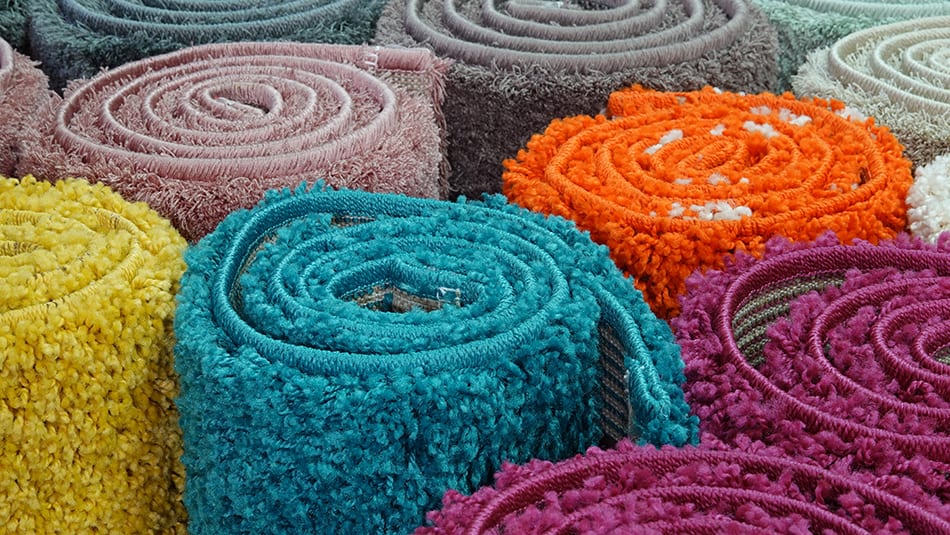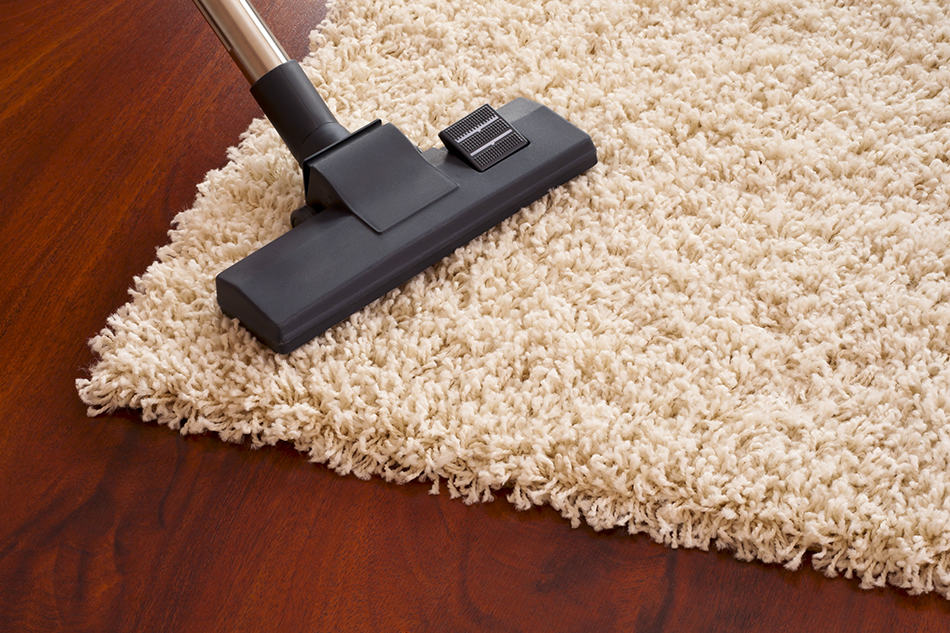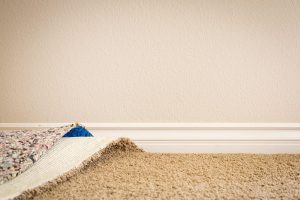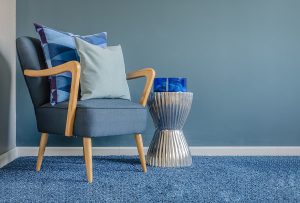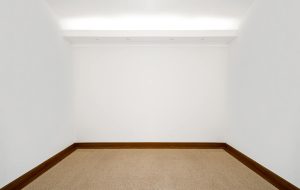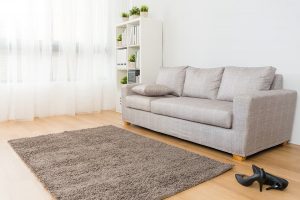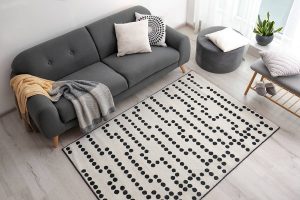Nylon carpet, a revolutionary synthetic fiber flooring option, first emerged in the 1950s and quickly set the standard in the carpet industry. Made from engineered plastic, nylon carpets are celebrated for their exceptional durability, making them ideal for high-traffic areas.
They lead the market, constituting over 60% of carpet sales in the USA. Nylon carpets are easy to maintain, requiring regular vacuuming and occasional steam cleaning to keep them in prime condition. These carpets stand out for their resilience, ability to retain shape under pressure, and versatility in design, offering a wide range of styles, colors, and price points. Additionally, they are environmentally friendly, as many types can be recycled.
However, they have some drawbacks: they’re absorbent, making them prone to staining, and are the most expensive synthetic carpet option. Nylon’s non-breathable nature means it doesn’t regulate temperature well and can generate static charge.
Despite these cons, nylon carpets are often seen as a long-term investment due to their longevity and overall quality. Let’s explore in full detail.
What is a Nylon Carpet?
Nylon is a synthetic fiber that was invented by a researcher at Dupont in 1935. It was famously first used for ladies’ stockings, but by the 1950s, many uses had been found for this new material, including carpet flooring. The following decades saw a carpet revolution thanks to nylon, as it was the first completely synthetic type of carpet available. It offered many benefits compared to natural fiber carpets and quickly became the gold standard of carpet flooring.
Nylon is made from engineered plastic and as such, is extremely hard-wearing. This is one of the reasons why nylon is such a popular type of carpet it is very resistant to wear and damage.
Today, nylon carpets account for over 60% of all carpet sales in the USA, making it undoubtedly the nation’s favorite type of carpet. Here are the reasons why this synthetic fabric has remained so popular as a type of carpet.
How to Clean a Nylon Carpet?
Nylon carpets should be regularly vacuumed to prevent dirt, debris, and rust stains from becoming embedded deep into their fibers. Areas that do not receive heavy foot traffic, such as bedrooms, should be vacuumed once a week, whereas more common areas of the home, such as living rooms or hallways, will benefit from daily vacuuming.
Nylon carpets should also be treated to a steam clean approximately every 12 to 24 months. This will revive the fibers of the carpet to help them maintain their original shape and also bring out any stains and pollutants. Steam cleaning can be carried out more regularly on nylon carpets if you wish to extend the life of the flooring.
Pros:
Durable
Nylon carpet is known to be one of the most durable types of carpet fibers around, and in fact, is the most durable of all synthetic types of carpet. This makes it a great choice for high-traffic areas such as entryways or stairs because it can withstand a high volume of footfall without showing considerable signs of wear and tear. The durability of nylon carpet also means you can expect it to last for many years, which makes it a good investment.
Easy Maintenance
If you don’t like to spend your time and money on fancy cleaning solutions, then you’ll be pleased to know that nylon carpets are very low maintenance. For the most part, regular vacuuming will keep nylon carpets in great shape, but they do benefit from an occasional steam cleaning treatment. This is because nylon contains a hydrogen molecule that can be revived using heat.
The hot temperature of the steam used in steam carpet cleaners will cause the hydrogen molecule to be activated and result in the fibers of the carpet bouncing back up.
For this reason, it is wise to steam clean a nylon carpet every year or two to keep it in top condition. If you have heavy foot traffic on your nylon carpet and the fibers become flattened, then you can steam clean the carpet more frequently to help bring it back to its former glory.
Resilient
Nylon carpets are made from synthetic fibers which have a good level of strength and elasticity. This means that even when the carpet has been squashed underneath a piece of heavy furniture, it has the ability to bounce back into shape.
Many types of nylon carpets will be able to be stretched by up to 30% of their original size and afterward can return to their initial shape. This is good news if you’re somebody who likes to rearrange their furniture frequently because you won’t be stuck with flattened patches of carpet on your floor from where sofas or units previously stood.
Recyclable
If, like many of us, you’re trying to consciously make good choices for the sake of the environment, then it’s helpful to know that many types of nylon carpet can be recycled into a new roll of carpet. There are also some recycling plants that turn old nylon carpets into material that makes washing machine components and wheel parts.
Variety
Nylon carpets are the most popular type of synthetic carpets used in residential properties, and this popularity means that there is a wide variety of choices when it comes to style, color, pattern, quality, and price. If you have your heart set on getting a nylon carpet, then you can be reasonably sure that you will be able to find a carpet in the style and color you have envisioned.
Nylon carpets also come in a wide range of budget options, making them a potential choice for people looking for inexpensive carpets right through to high-end luxury carpets.
Resistant to Mold and Mildew
As nylon carpets are synthetic, they do not contain any natural fibers that could be utilized by mold or mildew as food, which causes them to grow.
This means that nylon carpets are more resistant to mold and mildew growth. That being said, mold and mildew can grow on a nylon carpet or any other synthetic type of carpet if the carpet becomes soiled. It is for this reason that it is very important to keep carpets clean and treat any stains as soon as they appear.
Cons:
Absorbent
Nylon fibers are absorbent, which can make them problematic when it comes to staining. If a colored liquid, such as orange juice or red wine, is spilled onto the nylon carpet, then it will absorb the liquid and, therefore, make it much more difficult to remove the stain. There are ways to combat this, such as investing in a stain repellent that will help prevent absorption of the carpet fibers.
The way your carpet has been dyed will also affect its absorbency and stain resistance. Acid-dyed nylon carpets are dyed after the fibers have been formed, and these are the most absorbent types of nylon carpets and, therefore, the least stain-resistant.
Solution-dyed nylon carpets have the color locked into the fiber while it is being produced, meaning that the color forms part of the fiber rather than being a late addition.
Solution-dyed nylon carpets are much better at repelling stains because the stains cannot penetrate the fibers and therefore have nothing to attach themselves to. It is for this reason that solution-dyed nylon carpets are also resistant to bleaching and fading.
Expensive
Nylon fibers are expensive to produce, and this is reflected in the price of nylon carpets. They are the most costly type of synthetic carpets, which can put some buyers off. If you were to compare an average-quality nylon carpet with an average-quality polyester carpet, then the polyester option would be considerably cheaper.
However, nylon carpets are expected to last longer than their polyester counterparts, so if you were to calculate the cost per year of use you get out of your carpet, then you may find that nylon carpets represent a better investment as they work out at a lower price per year.
Although nylon carpets are the most expensive type of synthetic carpet, they can be found at almost any price point if you are willing to sacrifice quality. There are huge numbers of low-end nylon carpets available for people on a tight budget, as well as luxury nylon carpets for those looking for something more refined.
Not Breathable
As a synthetic fiber, nylon is not a breathable fabric. This means that, unlike natural materials such as wool and linen, nylon cannot regulate its temperature. For this reason, you will find that nylon carpets feel cold to the touch during cold months and warm to the touch during warm months.
By comparison, a natural carpet such as a wool carpet will feel warm to the touch in winter and cool to the touch in summer, making it a more comfortable temperature for bare feet. The lack of breathability also means that nylon carpets can feel damp during times of high humidity levels.
Static Charge
Nylon carpets are known for their ability to build up a static charge. This happens as a result of friction to the carpet fibers, most usually caused by walking across the carpet. When you make contact with the carpet, such as with your feet, the static charge transfers to your body and can then give you a shock when you touch a metal object that conducts electricity, for example, a light switch or door handle.
Although this might be briefly unpleasant, it is not dangerous. If static is a problem you are particularly concerned about, you can find nylon carpets that have been manufactured using a chemical that prevents static charges from building up.
